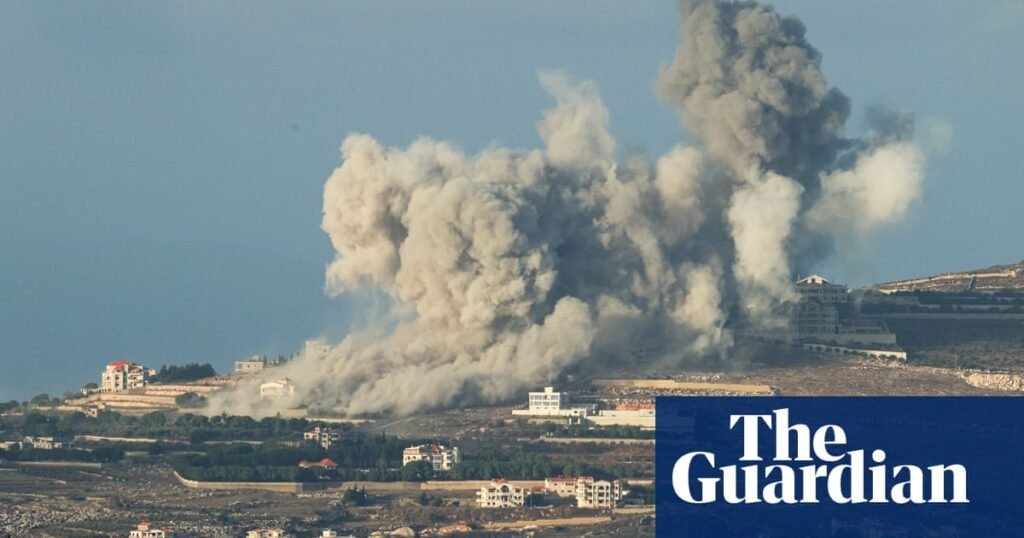Israel’s long-threatened ground operation in southern Lebanon appears to have been much smaller and more modest in purpose than previous statements had predicted.
The operation, which initially involved a single Israeli division, appeared to be limited and largely avoided direct conflict between Hezbollah and Israeli forces.
Israel said its main objective was to eliminate the threat of an invasion of northern Israel by Hezbollah, as on October 7, one of the main fears that drove Israelis from northern communities in the early stages of the Gaza war. It states that it is to be done.
It is unclear whether Hezbollah’s Radwan Special Operations Force was seriously planning a simultaneous attack on Israel.
The purported plan had been discussed by Israeli officials before the ground invasion, but would be a departure from previous small-scale invasion attempts.
“Hezbollah was planning to invade Israel, attack Israeli communities and massacre innocent men, women and children,” Israeli Defense Forces (IDF) senior spokesperson Daniel Hagari said on Tuesday. . “They called this plan ‘the conquest of Galilee.’ If the Lebanese state and the world cannot drive Hezbollah from its borders, we have no choice but to do it ourselves.”
Hagari’s argument does not explain why Hezbollah has so far limited itself to firing rockets at Israel, following rules of engagement that appear to be aimed at keeping it below the threshold of conflict escalation. A fighter incursion into northern Israel would have made more sense if the Israeli military had been more focused on fighting in Gaza and the IDF had been less deployed in northern Israel.
It is worth evaluating Hagari’s comments in the context of Israel’s broader intelligence and messaging campaign regarding ground operations. Campaign issues can sometimes seem contradictory as Israeli officials and political leaders seek to appeal to different audiences.
Politically, the evacuation of tens of thousands of Israelis from the north has become increasingly detrimental to Prime Minister Benjamin Netanyahu, affecting the country’s difficult politics.
Prime Minister Netanyahu’s far-right coalition partners, including Itamar Ben Gvir and Bezalel Smotrich, are trying to exploit worsening tensions in the north by demanding that something be done to bring back displaced people. .
Their demands have sparked widespread and deeply felt fears among communities in northern Israel that they will face the same fate as Hamas’ victims on October 7.
Skip past newsletter promotions
Register for Global Dispatch
Get a different view of the world with the best news, features and photos hand-picked by our global development team
Privacy Notice: Newsletters may include information about charities, online advertising, and content sponsored by external parties. Please see our Privacy Policy for more information. We use Google reCaptcha to protect our website and are subject to the Google Privacy Policy and Terms of Service.
After newsletter promotion
There is no doubt that Hezbollah has substantial infrastructure on its borders, positions that have existed for decades in some cases.
“As far as I understand, this move is aimed at targeting infrastructure that Hezbollah has built and some of the infrastructure that we were not familiar with,” said Israel Ziv, former director of the IDF Operations Directorate. He spoke to Israel’s 103 radio station hours after the attack. has been released. Ziv said some of that infrastructure was built by Hezbollah as an attack base in case of a potential invasion.
“[Israel’s]current move here is not a large-scale ground maneuver, it is precisely to eliminate the threat to communities near the border, and this is entirely part of a defensive operation. ”I don’t think this is a large-scale ground maneuver, conquest, or security zone (creation) operation in Lebanon. ”
Israel has previously tried unsuccessfully to assert the need for a wider buffer zone along its northern border through military action and diplomacy, but so far this time the scope of Israel’s efforts to assert the need for a wider buffer zone along its northern border is It appears to be limited to villages on the Lebanese border that claim to have been transformed. A position where you can attack.
Ziv, like others, believes that the current scope of continued operations does not necessarily mean an end to cross-border indirect fire.
“Under the[limited military action]framework, there could still be a war of attrition with rocket and mortar fire and everything else that would make life in northern communities really impossible. “I guess,” he added. “That’s why it’s so much more important to reach a (diplomatic) solution and isolate the threat from a faraway place.”
The paper’s longtime military correspondent, Amos Harel, hinted at the political imperatives of the operation in an op-ed for Haaretz, saying it was “intended to serve as a tranquilizer for the displaced population of northern Israel.” The Beirut and Bekaa bombings.
“In their view, the most pressing threat that must be addressed lies just beyond the border fence,” he added.
Israel also seems determined to convey, especially to the Biden administration, that the invasion is intended to be limited in scope and duration.
As in all conflicts, as the cliché goes, “the enemy gets the vote” on where the operation goes from here.
Whether the ground war remains within a few kilometers of the border or becomes embroiled in a more complex battle that neither side had necessarily planned for will depend, in part, on how Hezbollah responds.

